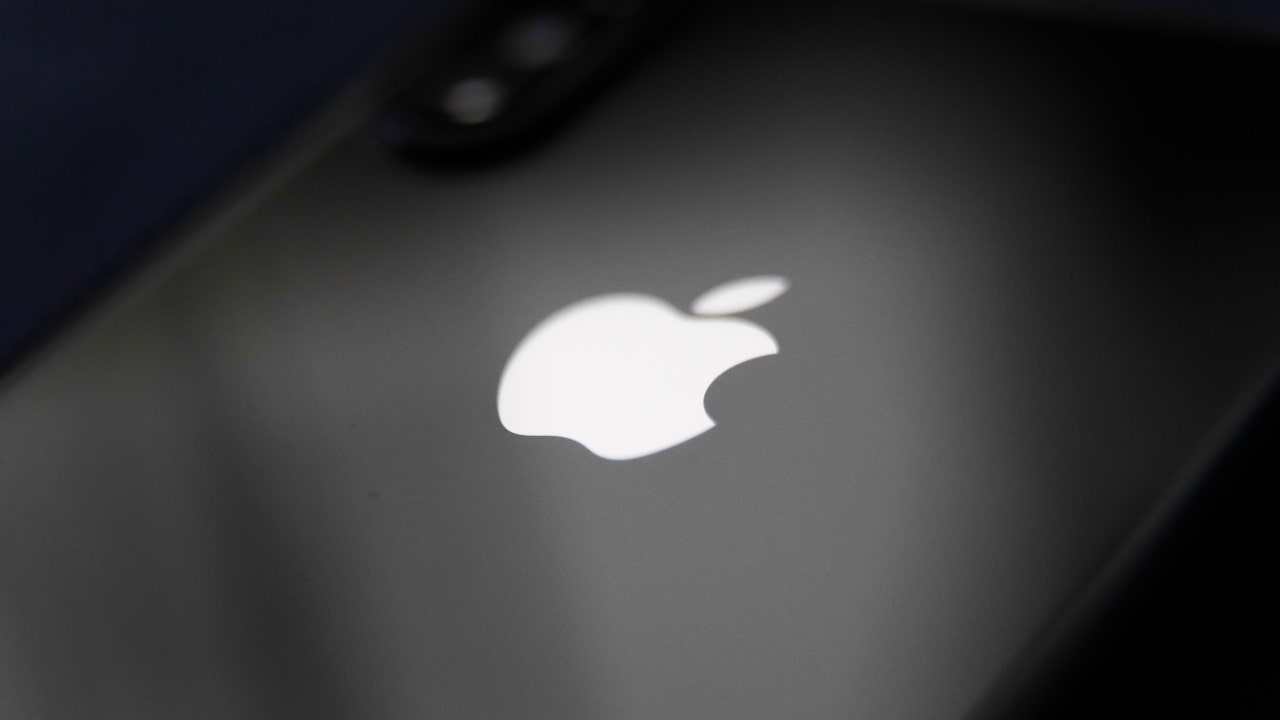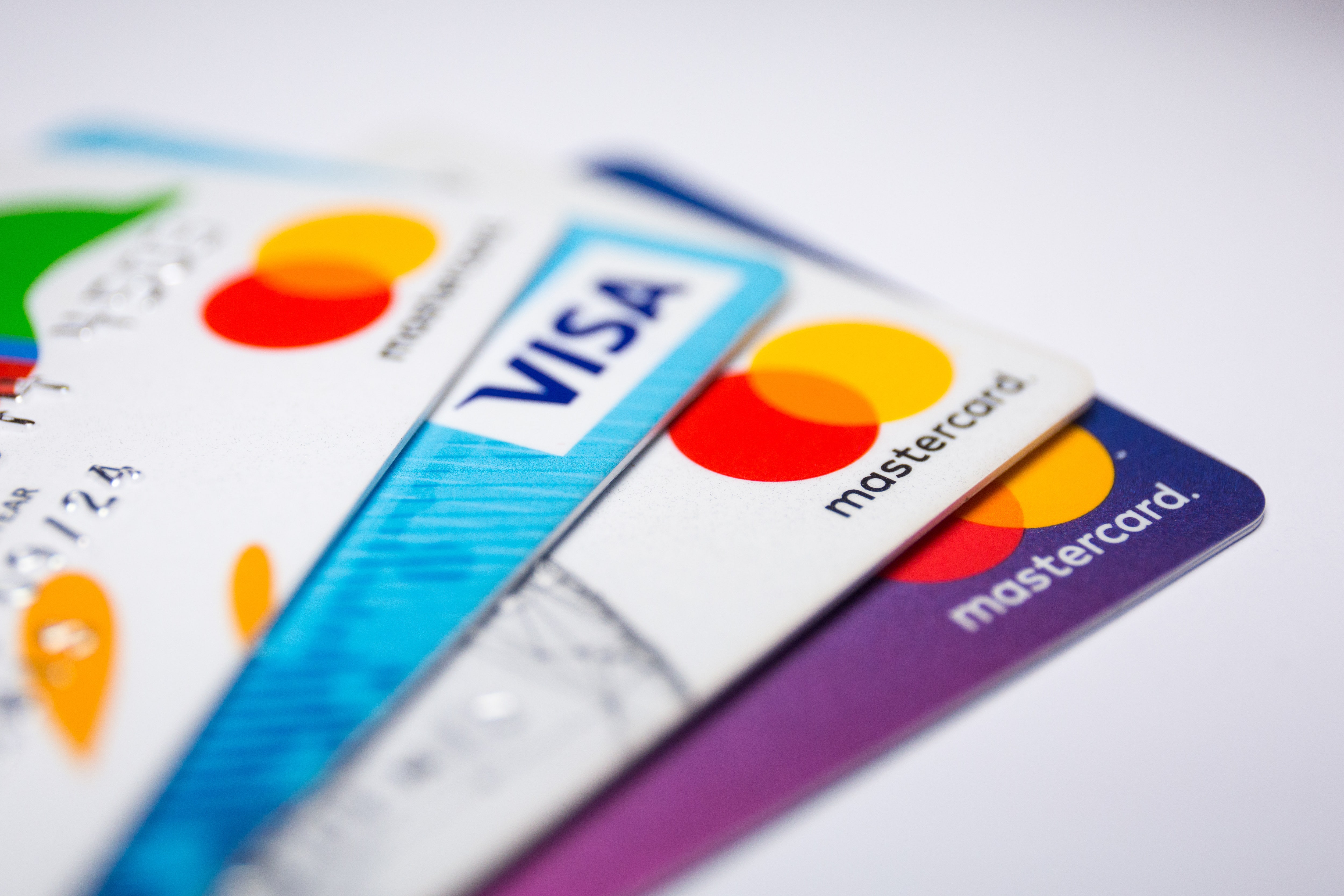Technology
CBS considers caving on Trump censorship lawsuit to save Paramount merger
/cdn.vox-cdn.com/uploads/chorus_asset/file/25530683/Screenshot_2024_07_14_at_6.17.45_PM.png)
A law professor cited by CBS News called Donald Trump’s $10 billion lawsuit over the editing of a 60 Minutes interview with Kamala Harris “…so ill grounded that it comes close to being sanctionable as frivolous.” But now, the The Wall Street Journal reports that executives at CBS’ parent company, Paramount Global, have discussed settling the suit while “gaming out options to reduce friction with the incoming administration” ahead of a government review of its merger with Skydance.
The paper reports that incoming FCC chairman and censor-in-chief Brendan Carr warned execs last year that presidential dissatisfaction with CBS News will make a review tougher. He’s also publicly displayed that view, saying during a Fox News interview in November, “…CBS has a transaction before the FCC. I’m pretty confident that news distortion complaint over the CBS 60 Minutes transcript is something that is likely to arise in the context of the FCC’s review of that transaction.”
The lawsuit claims that in airing two differently edited versions of Harris’ response to a question about the war in Gaza, “CBS used its national platform on 60 Minutes to cross the line from the exercise of judgment in reporting to deceitful, deceptive manipulation of news.”
But instead of mounting a defense of free speech against a lawsuit and Trump’s accusations that the network said were false and completely without merit, Paramount is considering following the example of Disney and tech oligarchs who will line up at the inauguration like Mark Zuckerberg.
The ABC News owner agreed to pay $15 million to Trump’s presidential foundation and museum to settle a defamation lawsuit in December. Zuckerberg sharply redirected Meta’s policies to the right while meeting with Trump, reportedly “in part to mediate a lawsuit Trump brought against Facebook and Zuckerberg in 2021 over the platform’s suspension of Trump’s account after the Jan. 6 riot at the U.S. Capitol.”

Technology
That Apple ID disabled message? It's a dangerous scam

Let’s talk about something that’s been popping up in inboxes lately — those sneaky “Your Apple ID has been disabled” emails.
Like many people who’ve reached out to us, you might have gotten one that looks pretty legit, saying something like, “Your Apple ID has been temporarily disabled. Verify your Apple ID Information.”
Spoiler alert: It’s most likely a scam, and we’re going to break down why.
I’M GIVING AWAY THE LATEST & GREATEST AIRPODS PRO 2
Apple ID scam email. (Kurt “CyberGuy” Knutsson)
The anatomy of the scam
So, here’s how these tricksters operate. You get an email that looks totally legit with an Apple logo and creates a sense of urgency, claiming your Apple ID is in trouble. They’ll say something like, “If you do not verify your account within 48 hours, it will be permanently locked.” Yikes, right? That’s exactly what they want you to think. So, you’ll “Click the button below to verify as soon as possible.” They want you to click where it says, “Go to Apple ID.”
Once you do that, you’re directed to a fake Apple website designed to look almost identical to the real one. This fraudulent site prompts you to enter your username, password and other sensitive information, which the scammers can then use to access your Apple account and potentially steal your personal data or make unauthorized purchases.

Apple ID scam email. (Kurt “CyberGuy” Knutsson)
NEW CYBERATTACK TARGETS IPHONE AND APPLE IDS: HERE’S HOW TO STAY SAFE
Let’s play detective and look at some red flags in these scam emails
Urgent language: They’re trying to scare you into acting without thinking. Classic scammer move.
Vague claims: “Missing or invalid information”? That’s purposely unclear to make you doubt yourself.
Threats of lockout: Nothing like a good threat to get your heart racing, huh?
Terms of service talk: They throw this in to sound official, but it’s just smoke and mirrors.
Grammar goofs: Real Apple emails are polished. Scammers? Not so much.
Fishy sender address: Always check if it’s actually from @apple.com (spoiler: it’s probably not). Any legitimate email from Apple will come from a domain ending in “@email.apple.com. As you can see from the scam email below, it’s from a fake email: mfrasier@wavecable.com, not Apple.
WHAT IS ARTIFICIAL INTELLIGENCE (AI)?

Apple ID scam email. (Kurt “CyberGuy” Knutsson)
HOW TO SECURELY LOCK YOUR IPHONE AND IPAD FROM PRYING EYES
Why are scammers after your Apple ID?
You might wonder, “Why are these scammers so obsessed with Apple IDs?” Well, there are a few reasons:
- iCloud goldmine: Your photos, contacts and documents are valuable for identity theft or blackmail.
- Shopping spree potential: Stored payment info means they could go on a spending spree on your dime.
- Financial account access: Many folks link their bank accounts to their Apple ID. Jackpot for hackers.
- Dark web data deals: Your personal info can fetch a pretty penny in shady online marketplaces.
5 THINGS TO DO FIRST IF YOU GOT A NEW MAC
How to keep these scammers at bay
To keep scammers at bay and secure your Apple ID, follow these comprehensive steps:
1. Enable Two-Factor Authentication (2FA): This crucial security feature adds an extra layer of protection to your Apple ID. Set it up by going to Settings > [your name] > Sign-In & Security on your iPhone or iPad, or Apple menu> System Settings > [your name] > Sign-In & Security on your Mac.
2. Use strong passcodes: Opt for alphanumeric passcodes instead of simple PINs. When in public, use biometrics (Face ID or Touch ID) and be cautious when entering your passcode.
3. Enable Stolen Device Protection: If you’re using iOS 17.3 or later, turn on this feature for additional security against theft.
4. Keep software updated: Regularly update your operating system and apps to ensure you have the latest security patches.
5. Don’t click on suspicious links, use strong antivirus software: If the email asks you to click a link, don’t do it right away. Hover over the link to see the actual URL. If it doesn’t look like an official Apple website (or any site you trust), don’t click it.
The best way to safeguard yourself from malicious links that install malware, potentially accessing your private information, is to have antivirus software installed on all your devices. This protection can also alert you to phishing emails and ransomware scams, keeping your personal information and digital assets safe. Get my picks for the best 2025 antivirus protection winners for your Windows, Mac, Android and iOS devices.
6. Use a password manager: Generate and store strong, unique passwords for all your accounts by using a password manager.
7. Enable Find My: Turn on Find My iPhone to help locate your device if it’s lost or stolen.
8. Use a personal data removal service: Consider using a service that finds and removes your personal information from data broker sites. These services can help reduce your digital footprint, making it harder for scammers to obtain your data to target you in the first place. Look for a service that offers automated removals from hundreds of data aggregators and provides detailed verification of removals.
While no service promises to remove all your data from the internet, having a removal service is great if you want to constantly monitor and automate the process of removing your information from hundreds of sites continuously over a longer period of time. Check out my top picks for data removal services here.
9. Don’t click on suspicious links: If the email asks you to click a link, don’t do it right away. Hover over the link to see the actual URL. If it doesn’t look like an official Apple website (or any site you trust), don’t click it.
The best way to safeguard yourself from malicious links that install malware, potentially accessing your private information, is to have antivirus software installed on all your devices. This protection can also alert you to phishing emails and ransomware scams, keeping your personal information and digital assets safe. Get my picks for the best 2025 antivirus protection winners for your Windows, Mac, Android and iOS devices.

Apple ID scam email. (Kurt “CyberGuy” Knutsson)
TOP PHONE CHARGING CABLES THAT WILL SUPERCHARGE YOUR APPLE DEVICES
How Apple actually reaches out
Apple will never email you asking for your password or threaten to lock your account. If there’s a real issue, you’ll usually get a notification on your trusted device or be asked to sign in to your Apple ID account page directly. Remember, Apple will never ask for your password via email, phone or text message. Always access your account through official Apple websites or apps.
Kurt’s key takeaways
These scammers are getting craftier, but with a bit of know-how and caution, you can keep your Apple ID (and all the good stuff connected to it) safe and sound. Remember, if something feels fishy, trust your gut. When in doubt, go straight to Apple’s official website or give their support team a call. Keep your digital life secure, and don’t let those scammers take a bite out of your Apple.
Have you ever fallen victim to a digital scam, and what steps did you take to protect yourself afterward? Let us know by writing us at Cyberguy.com/Contact
For more of my tech tips & security alerts, subscribe to my free CyberGuy Report Newsletter by heading to Cyberguy.com/Newsletter
Ask Kurt a question or let us know what stories you’d like us to cover.
Follow Kurt on his social channels:
Answers to the most-asked CyberGuy questions:
New from Kurt:
Copyright 2025 CyberGuy.com. All rights reserved.
Technology
TikTok says it will go offline on Sunday if Biden doesn’t intervene
/cdn.vox-cdn.com/uploads/chorus_asset/file/25829977/STK051_TIKTOKBAN_B_CVirginia_C.jpg)
TikTok says it plans to go offline on Sunday, January 19th if the Biden administration doesn’t intervene.
The company confirms earlier reporting that it will be “forced to go dark” on the 19th unless the outgoing administration provides a “definitive statement” assuring its “most critical service providers” that they won’t be held liable for breaking the law. Those providers include Apple and Google, which together distribute TikTok through their app stores, and its hosting partners, which include Amazon and Oracle.
TikTok’s statement follows Friday’s Supreme Court ruling that upheld the law banning the app unless its Chinese parent company, ByteDance, divests its ownership stake. Shortly after the Supreme Court’s ruling, TikTok CEO Shou Chew appealed to President-elect Donald Trump in a video but didn’t give any indication of what might happen when the law goes into effect at midnight on Saturday.
Unfortunately for TikTok, the White House has already made clear that it intends to punt the fate of the app to Donald Trump, who has promised to save it and is set to be sworn in as president on Monday, January 20th. Trump said on Friday that he spoke with China President Xi Jinping about “balancing trade, fentanyl, TikTok, and many other subjects.”
“President Biden’s position on TikTok has been clear for months, including since Congress sent a bill in overwhelming, bipartisan fashion to the President’s desk: TikTok should remain available to Americans, but simply under American ownership or other ownership that addresses the national security concerns identified by Congress in developing this law,” the White House said in a statement on Friday. “Given the sheer fact of timing, this Administration recognizes that actions to implement the law simply must fall to the next Administration, which takes office on Monday.”
Meanwhile, the Department of Justice, which is tasked with enforcing the TikTok ban by fining its US service providers $5,000 per user with access to the app, has signaled that it’s still behind the ban.
“Authoritarian regimes should not have unfettered access to millions of Americans’ sensitive data,” Attorney General Merrick Garland said on Friday. “The Court’s decision affirms that this Act protects the national security of the United States in a manner that is consistent with the Constitution.”
As the ban deadline gets nearer, politicians who voted for it have started flipping by arguing that ByteDance should have more time to divest. According to The New York Times, Senator Chuck Schumer told President Biden that allowing a ban to happen would “damage his legacy.”
You can read TikTok’s full statement about shutting down below:
The statements issued today by both the Biden White House and the Department of Justice have failed to provide the necessary clarity and assurance to the service providers that are integral to maintaining TikTok’s availability to over 170 million Americans.
Unless the Biden Administration immediately provides a definitive statement to satisfy the most critical service providers assuring non-enforcement, unfortunately TikTok will be forced to go dark on January 19.
Technology
These mistakes could tank your credit score

Do you know the difference between 550 and 780? Yes, they’re 230 digits apart, but they’re also examples of bad and good credit scores, respectively.
Win a pair of $329 Ray-Ban Meta smart glasses. Enter here, no purchase necessary!
If you don’t check yours regularly, now’s the time to start. Small mistakes are a lot more common than you think, and they can do some serious damage to your credit score. I’ll let you in on some of the most common credit report mistakes and what you can do to fix them.
5-MINUTE CLEANUP FOR YOUR PHONE AND COMPUTER
Step 1: Get your free credit report
The three credit reporting agencies (TransUnion, Experian and Equifax) are required by law to provide you with one free credit report a year. Sweet. There are a few ways you can request a copy from each agency.
Online is the fastest route. If you submit a request via phone or mail, expect to wait two weeks after the paperwork is received.
- Online: www.AnnualCreditReport.com
- Phone: 877-FACTACT (877-322-8228)
- Mail: Download and complete the Annual Credit Report Request Form. Send it to: Annual Credit Report Request Service, P.O. Box 105281, Atlanta, GA 30348-5281
Pro tip: Grab your report from the fourth credit bureau, Innovis, too.
Close up of a man with a smartphone and laptop computer on January 31, 2019. (Neil Godwin/Future via Getty Images)
Step 2: Look for the most common mistakes
Typos or wrong info: Anything from your name spelled incorrectly to your address or your birthdate off by one number. Tiny mistakes can mix up your credit with someone else’s.
Accounts you don’t recognize: If you see something you don’t recognize, don’t ignore it! This includes credit cards you never applied for, loans in your name or purchases you didn’t make.
Duplicates: It’s not normal to see a debt twice on a credit report. This includes things like the same collection account, transferred debts showing as separate accounts or paid-off debts still sitting there.
Incorrect account info: Sometimes, payments can mistakenly show up as late, or closed accounts may still show as active. Other times, reports may show the wrong credit limit or mess up your payment history.
AI ISN’T GOING ANYWHERE: PROMPTS TO MAKE LIFE EASIER
Outdated info: Bankruptcies older than 10 years, late payments older than seven years and outdated collections accounts should not be showing on your credit report.
Make sure websites are following your rules: How to check permissions
Step 3: Report anything strange
Don’t panic! Write down and make copies of anything that looks off, then file a dispute with the credit reporting company by mail, phone or online.
If you’re filing online or by mail, explain in writing exactly what’s wrong and why, and include copies of documents with proof. Make sure to include your contact info, credit report confirmation numbers and a copy of your version of your credit report.

Close-up of the upper corner of a consumer credit report from the credit bureau Equifax, with text reading Credit File and Personal Identification, on a light wooden surface, September 11, 2017. (Smith Collection/Gado/Getty Images)
And always follow up! Bureaus are required to look into your disputes within 30 days. Track its progress until you have a resolution in writing. If your dispute is valid, the bureau has to fix it and tell the other bureaus as well.
A lot of these issues boil down to good old-fashioned human error. It happens, but don’t let that stop you from taking charge.
Related: How to run a 5-minute privacy check on your phone
While you’re at it, find your job number
Equifax also runs a database of 716 million income and employment records, including, potentially, yours. It’s called The Work Number, and employers use it to make sure you are who you say you are.
Your Employment Data Report (EDR) includes things like where you’ve worked, when you worked there and your exact past salary numbers.
TECH TIP: SAVE YOUR MEMORIES BEFORE IT’S TOO LATE
Trying to get a new job? An employer could use your EDR to find your past salary range and lowball you in negotiations. And, of course, Equifax will sell your EDR to anyone who’s buying, including debt collectors.
Money smarts: It’s not just bogus calls and emails putting your bank info at risk
How to stop it
You can freeze your EDR just like a credit report. You can also see who’s tried to access it within the past two years. You’ll need to make an account with The Work Number to do it.
- Search for your current or former employer(s) using their name or employer code (the nine-digit number on your W-2).
- Click their name, followed by Register Now. Heads-up: It’ll ask for your Social Security number.
Once you register, look over your report and make sure it’s accurate. Fill out this data dispute form if you find anything fishy.

A credit card is pictured alongside a restaurant bill. (iStock)
Then, head back to the dashboard and click Freeze Your Data. Fill out the Data Freeze Placement Form and submit it. The Work Number will send you a freeze confirmation letter, along with a PIN. Save your PIN in your password manager. You’ll need it if you ever want to unfreeze your report.
You can always log into The Work Number or call them to unfreeze your report.
If you can’t find your employer: They may not be registered with The Work Number. Call the freeze helpline at 1-800-367-2884 to double-check.
Unless you’re actively applying for a loan or government benefits, or unless an employer actively requests your EDR, it’s a no-brainer to freeze it. And if a potential employer insists on checking your EDR to hire you, maybe it’s not the right fit after all.
Get tech-smarter on your schedule
Award-winning host Kim Komando is your secret weapon for navigating tech.
Copyright 2025, WestStar Multimedia Entertainment. All rights reserved.
-
/cdn.vox-cdn.com/uploads/chorus_asset/file/25822586/STK169_ZUCKERBERG_MAGA_STKS491_CVIRGINIA_A.jpg)
/cdn.vox-cdn.com/uploads/chorus_asset/file/25822586/STK169_ZUCKERBERG_MAGA_STKS491_CVIRGINIA_A.jpg) Technology1 week ago
Technology1 week agoMeta is highlighting a splintering global approach to online speech
-

 Science7 days ago
Science7 days agoMetro will offer free rides in L.A. through Sunday due to fires
-
/cdn.vox-cdn.com/uploads/chorus_asset/file/23935558/acastro_STK103__01.jpg)
/cdn.vox-cdn.com/uploads/chorus_asset/file/23935558/acastro_STK103__01.jpg) Technology7 days ago
Technology7 days agoAmazon Prime will shut down its clothing try-on program
-

 News1 week ago
News1 week agoMapping the Damage From the Palisades Fire
-

 News1 week ago
News1 week agoMourners Defy Subfreezing Temperatures to Honor Jimmy Carter at the Capitol
-
/cdn.vox-cdn.com/uploads/chorus_asset/file/25826211/lorealcellbioprint.jpg)
/cdn.vox-cdn.com/uploads/chorus_asset/file/25826211/lorealcellbioprint.jpg) Technology6 days ago
Technology6 days agoL’Oréal’s new skincare gadget told me I should try retinol
-
/cdn.vox-cdn.com/uploads/chorus_asset/file/25832751/2192581677.jpg)
/cdn.vox-cdn.com/uploads/chorus_asset/file/25832751/2192581677.jpg) Technology3 days ago
Technology3 days agoSuper Bowl LIX will stream for free on Tubi
-

 Business4 days ago
Business4 days agoWhy TikTok Users Are Downloading ‘Red Note,’ the Chinese App














